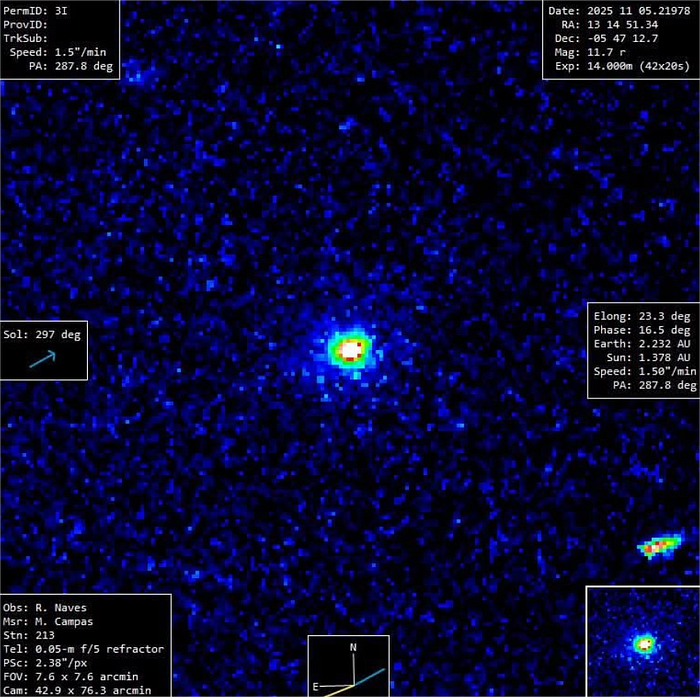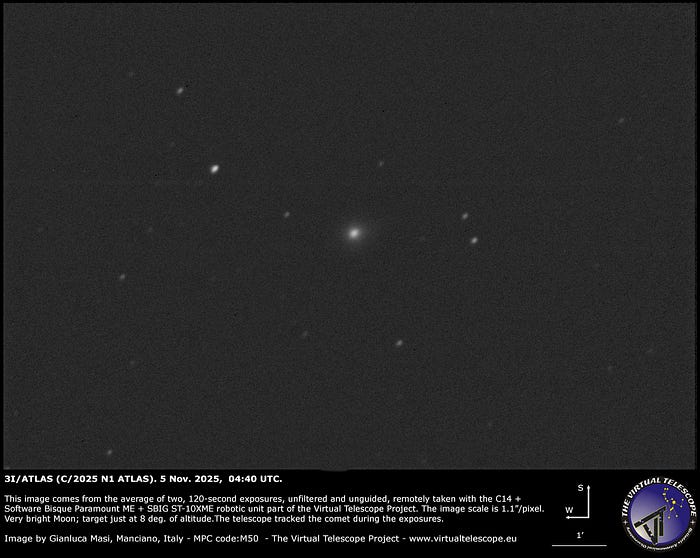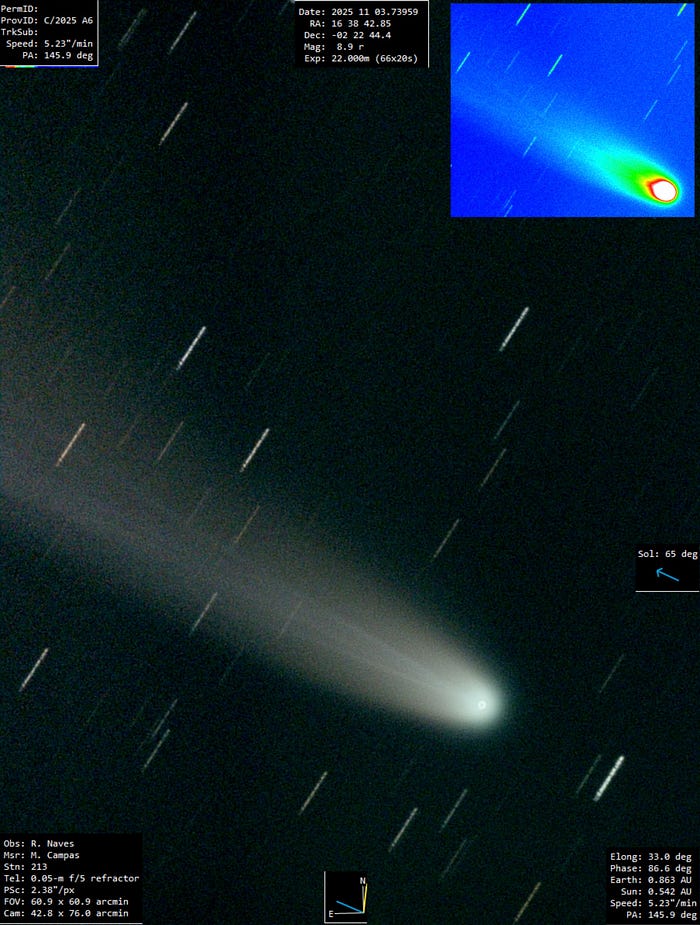No Clear Cometary Tail in Post-Perihelion Images of 3I/ATLAS
Avi Loeb

On November 5, 2025, two new images of the interstellar object 3I/ATLAS were released. They show a compact source of light without a clear cometary tail. The coma is not very different in morphology than its appearance in the Hubble Space Telescope on July 21, 2025 (accessible here).
Press enter or click to view image in full size

This is surprising in view of NASA’s JPL report here of a non-gravitational acceleration — normalized at a heliocentric value of 1 au:
1. A radial acceleration away from the Sun of 1.1×10^{-6} au per day squared.
2. A transverse acceleration relative to the Sun’s direction of 3.7×10^{-7} au per day squared.
Based on momentum conservation (as discussed here), I derived here that the mass fraction lost during the perihelion passage of 3I/ATLAS is larger than 13%. For a typical comet, this should have resulted in a massive coma with dust and gas that would have been pushed by the solar radiation pressure and the solar wind to the shape of a typical cometary tail pointing away from the Sun. No such tail is visible in the new images from November 5, 2025.
In comparison, I include below an image of the solar system’s comet Lemmon, taken by one of the telescopes that observed 3I/ATLAS two days ago. Lemmon features a clear cometary tail pointing away from the Sun, as expected.
Press enter or click to view image in full size

The anomalies displayed so far by 3I/ATLAS include:
1. Its retrograde trajectory is aligned to within 5 degrees with the ecliptic plane of the planets around the Sun, with a likelihood of 0.2% (see here).
2. During July and August 2025, it displayed a sunward jet (anti-tail) that is not an optical illusion from geometric perspective, unlike familiar comets (see here).
Get Avi Loeb’s stories in your inbox
Join Medium for free to get updates from this writer.
3. Its nucleus is about a million times more massive than 1I/`Oumuamua and a thousand times more massive than 2I/Borisov, while moving faster than both, altogether with a likelihood of less than 0.1% (see here and here).
4. Its arrival time was fine-tuned to bring it within tens of millions of kilometers from Mars, Venus and Jupiter and be unobservable from Earth at perihelion, with a likelihood of 0.005% (see here).
5. Its gas plume contains much more nickel than iron (as found in industrially-produced nickel alloys) and a nickel to cyanide ratio that is orders of magnitude larger than that of all known comets, including 2I/Borisov, with a likelihood below 1% (see here).
6. Its gas plume contains only 4% water by mass, a primary constituent of familiar comets (see here).
7. It shows extreme negative polarization, unprecedented for all known comets, including 2I/Borisov, with a likelihood below 1% (see here).
8. It arrived from a direction coincident with the radio “Wow! Signal” to within 9 degrees, with a likelihood of 0.6% (see here).
9. Near perihelion, it brightened faster than any known comet and was bluer than the Sun (see here).
10. It exhibits non-gravitational acceleration which requires massive evaporation of at least 13%of its mass (as calculated here), but preliminary post-perihelion images do not show evidence for it so far.
